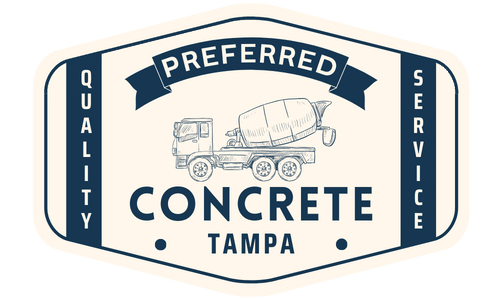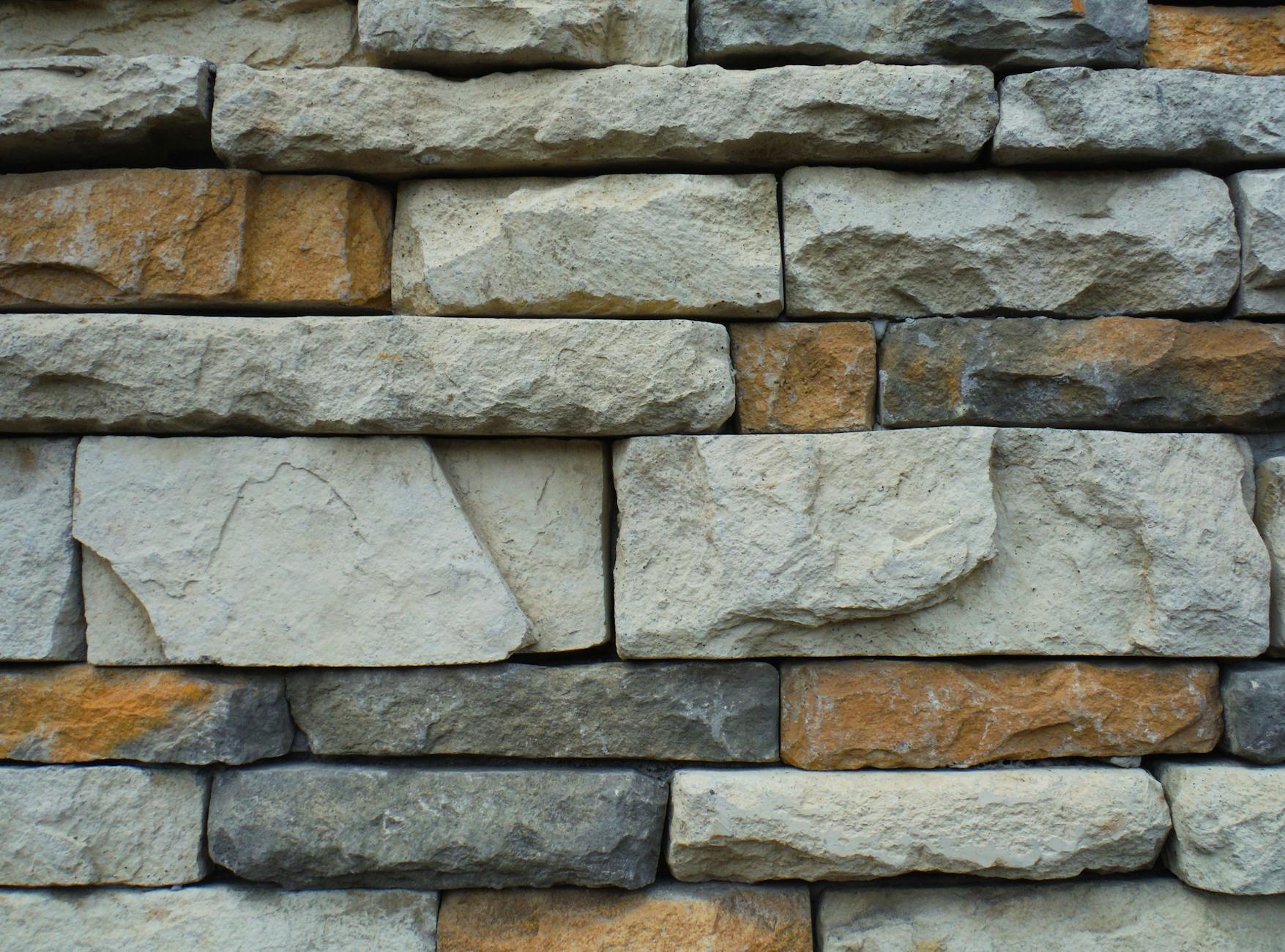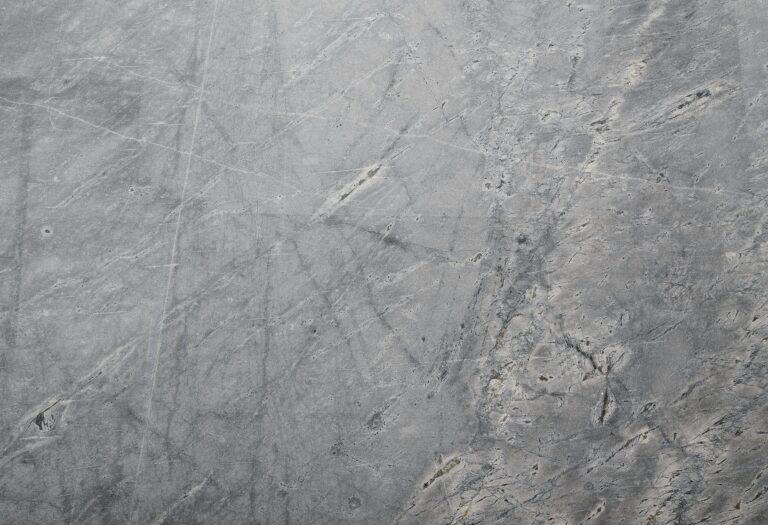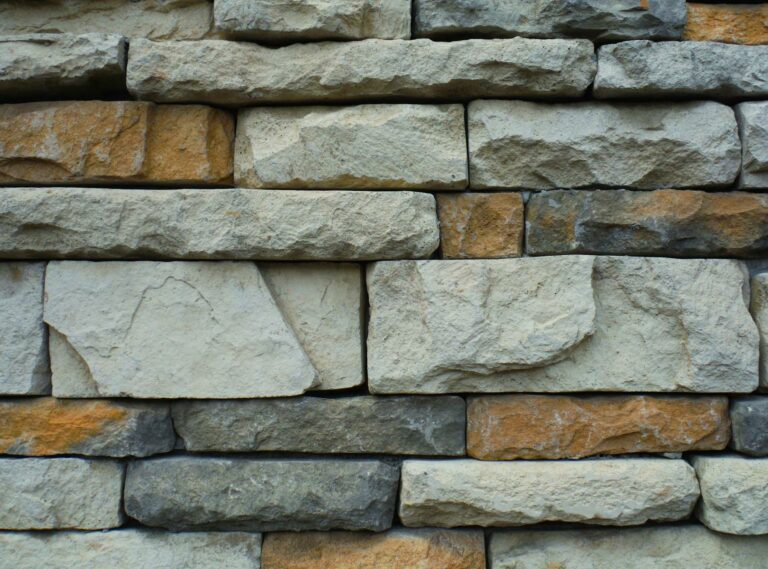Introduction to Stamped Concrete
When it comes to creating stunning surfaces, stamped concrete is a versatile and popular choice. This decorative concrete technique allows you to achieve the look of other materials, such as brick, slate, or stone, while benefiting from the durability and strength of regular concrete.
What is Stamped Concrete?
Stamped concrete is a type of decorative concrete that is imprinted or patterned to resemble various textures and designs. It involves the use of specialized stamps that are pressed onto freshly poured or existing concrete to create a desired pattern or texture. This process can replicate the appearance of natural materials like brick, slate, cobblestone, or even wood grain.
One of the key advantages of stamped concrete is its ability to be customized to suit different design preferences and styles. Whether you want a rustic, traditional, or modern look, stamped concrete can deliver the desired aesthetic. It is a versatile option for both residential and commercial applications, making it suitable for a wide range of surfaces, including concrete patios, concrete driveways, concrete flooring, and concrete retaining walls (Concrete Master).
Benefits of Stamped Concrete
Stamped concrete offers numerous benefits that make it an appealing choice for both homeowners and businesses. Some of the main advantages include:
-
Cost-Effective: Stamped concrete provides the high-end look of more expensive materials, such as natural stone or wood, at a fraction of the cost. This makes it an affordable option for those looking to achieve an upscale aesthetic without breaking the bank.
-
Customization: With almost endless design possibilities, stamped concrete allows for a wide range of patterns, textures, and colors. This versatility enables you to create a unique and personalized look that complements your style and enhances the overall appeal of your space (G&G Concrete & Construction).
-
Durability: Stamped concrete is highly durable and long-lasting. It can withstand heavy foot traffic, vehicular traffic, and various weather conditions without significant wear or damage. This makes it an ideal choice for outdoor surfaces that require resilience and strength.
-
Low Maintenance: Stamped concrete requires minimal maintenance compared to other materials, such as stone, tile, or brick. Routine cleaning and periodic sealing every three to five years can help preserve its appearance and protect it from staining or water damage (G&G Concrete & Construction).
By opting for stamped concrete, you can enjoy the benefits of a visually appealing surface that is both durable and cost-effective. Whether you’re looking to enhance your outdoor living space or add a touch of elegance to your interior floors, stamped concrete offers a wide range of design options and advantages.
Cost of Stamped Concrete
When considering stamped concrete for your surfaces, it’s important to understand the cost aspects associated with this popular decorative concrete option.
Factors Affecting Stamped Concrete Cost
The cost of stamped concrete can vary depending on several factors. These factors include:
-
Size of the Project: The total area to be covered with stamped concrete plays a significant role in determining the overall cost. Larger projects tend to have a lower cost per square foot compared to smaller ones.
-
Design Complexity: The complexity of the design and the level of detail required can impact the cost. Intricate patterns or custom designs may require more labor and time, resulting in a higher cost.
-
Material Selection: The choice of materials, such as the type of stamps and colorants used, can affect the cost. Some materials may be more expensive than others, especially if they closely mimic the appearance of luxury paving materials like natural stone, wood, or brick.
-
Site Preparation: The condition of the site and the amount of preparation required can influence the cost. If the existing surface needs extensive preparation or repairs, it may add to the overall cost of the project.
It’s important to consult with a professional concrete contractor to assess these factors and provide an accurate estimate based on your specific requirements.
Average Cost of Stamped Concrete
The cost of stamped concrete typically ranges from $9 to $16.25 per square foot, according to Lawnstarter. However, high-end designs can cost as much as $25.25 per square foot. The total spending on stamped concrete will vary depending on factors such as the size of the slab, its strength, and the complexity of the design.
Here is an overview of the average cost range for stamped concrete:
| Stamped Concrete Cost (per sq. ft.) |
|---|
| Basic Design |
| Mid-range Design |
| High-End Design |
Figures courtesy Lawnstarter
It’s worth noting that while stamped concrete may have a higher upfront cost compared to traditional concrete, it offers an affordable alternative to luxury paving materials. Concrete companies offer multiple colors and stamp patterns that mimic the appearance of natural stone, wood, and brick, providing a high-end design without spending a small fortune.
In conclusion, when considering stamped concrete, it’s essential to consider factors such as project size, design complexity, material selection, and site preparation. With the help of a professional concrete contractor, you can determine the average cost and choose the best options that suit both your budget and aesthetic preferences.
Design Options for Stamped Concrete
When it comes to stamped concrete, the design options are virtually limitless. With the ability to mimic the look of various materials such as wood, stone, brick, and more, stamped concrete offers versatility and aesthetic appeal. In this section, we will explore the design options available for stamped concrete, including patterns and textures, as well as color choices.
Patterns and Textures
Stamped concrete patterns can replicate the appearance of natural materials, allowing you to achieve the desired aesthetic without the high cost. Whether you’re looking to create a rustic cobblestone pathway or a sleek and modern slate patio, there are numerous patterns to choose from.
Some popular stamped concrete patterns include:
- London Cobblestone
- Ashlar Cut Slate
- Random Stone
- Classic Wood
- Running Bond New Brick
- Herringbone New Brick
- Grand Ashlar
- European Fan
- Fractured Cyprus Slate
- Stones of Athens
- Rough Stone Texture
- Sanded Slate Texture
These patterns, along with many others, provide a wide range of options to suit different architectural styles and personal preferences. The versatility of stamped concrete patterns allows you to create a custom look that complements your outdoor space. For more visual examples of these patterns, you can visit our gallery of stamped concrete designs.
Color Options
In addition to patterns and textures, stamped concrete also offers a variety of color options. With the right combination of colors, you can further enhance the realistic appearance of the stamped concrete surface.
Color options for stamped concrete are not limited to solid colors. In fact, many decorative concrete contractors use multiple colors or techniques to achieve a more natural and vibrant look. By layering different shades and applying techniques such as antiquing or highlighting, the stamped concrete can closely resemble natural materials like flagstone, brick, or wood.
When choosing colors for your stamped concrete project, it’s important to consider the surrounding elements and the overall aesthetic you want to achieve. Whether you prefer earthy tones, bold hues, or a blend of colors, there are options available to suit your preferences.
Remember that the color of stamped concrete may change slightly over time due to aging and exposure to sunlight. To ensure the longevity of the color, it’s recommended to apply a sealer that provides protection against fading and enhances the vibrancy of the colors.
By carefully selecting the patterns, textures, and colors for your stamped concrete project, you can create stunning surfaces that enhance the beauty of your outdoor spaces. Whether it’s for concrete patios, concrete driveways, concrete flooring, or concrete retaining walls, stamped concrete offers a versatile and cost-effective solution that combines durability with aesthetic appeal.
Application of Stamped Concrete
Stamped concrete is a versatile and visually appealing option for a variety of applications. Its ability to mimic higher-end materials like natural stone, brick, or wood, combined with its durability and longevity, makes it a popular choice for both residential and commercial projects. In this section, we will explore the popular uses of stamped concrete and the installation process involved.
Popular Uses of Stamped Concrete
Stamped concrete can be used in various outdoor areas to enhance the aesthetics and functionality of the space. Some of the popular uses of stamped concrete include:
-
Concrete Patios: Stamped concrete patios provide a beautiful and durable outdoor living space. They can be customized with different patterns, textures, and colors to create a unique and inviting patio area. For more information on concrete patios, visit our article on concrete patios.
-
Concrete Driveways: Stamped concrete driveways offer an attractive alternative to traditional concrete or asphalt driveways. They can be designed to resemble more expensive materials, giving your home’s exterior a sophisticated look. To learn more about concrete driveways, check out our article on concrete driveways.
-
Concrete Walkways: Stamped concrete walkways can transform the entrance of your home or business. With a wide range of patterns and colors to choose from, you can create a welcoming path that complements the overall design of your property.
-
Concrete Pool Decks: Stamped concrete is an excellent choice for pool decks as it provides a slip-resistant and durable surface. The customizable design options allow you to create a pool deck that complements your outdoor space while providing a safe and visually appealing area around the pool.
-
Concrete Flooring: Stamped concrete can also be used indoors to create unique and stylish flooring options. From residential spaces to commercial establishments, stamped concrete flooring offers a cost-effective and durable solution. For more information on concrete flooring, visit our article on concrete flooring.
Installation Process
The installation process of stamped concrete involves several steps to ensure a quality and long-lasting result. Here is an overview of the typical installation process:
-
Concrete Pouring: The process begins with pouring and leveling the concrete slab to the desired thickness and shape. The concrete is usually reinforced with steel bars or fibers to enhance its strength.
-
Coloring: After the concrete is poured and while it is still wet, color hardeners or integral colorants are applied to the surface. These colorants provide the base color for the stamped concrete and can be customized to match your preferences.
-
Stamping: Once the concrete has reached the appropriate stage of hardness, stamping tools are pressed onto the surface to create the desired patterns and textures. These tools are typically made of polyurethane or rubber and come in a variety of designs to mimic different materials.
-
Finishing Touches: After the stamping process is complete, any necessary touch-ups and detailing are done to ensure a consistent and cohesive appearance. This may include adding texture, highlighting details, or applying additional color accents.
-
Curing and Sealing: The stamped concrete is left to cure for a specific period to achieve its maximum strength. Afterward, a sealant is applied to protect the surface from stains, UV damage, and wear. Regular resealing is recommended to maintain the appearance and durability of the stamped concrete.
By following these steps, professional concrete contractors can create stunning and durable surfaces with stamped concrete. Whether it’s for a patio, driveway, walkway, pool deck, or indoor flooring, stamped concrete offers endless design possibilities and long-lasting beauty for your space.
Maintenance and Longevity of Stamped Concrete
When it comes to stamped concrete, proper maintenance is essential to ensure its longevity and preserve its stunning appearance. By following routine maintenance tips and understanding the lifespan of stamped concrete, you can enjoy its beauty for years to come.
Routine Maintenance Tips
To keep your stamped concrete looking its best, regular maintenance is required. Here are some essential routine maintenance tips:
-
Sealing the Surface: Sealing is a crucial step in maintaining stamped concrete. It helps to protect the surface from the elements and enhances its durability. Polyurethane sealants are commonly used for this purpose. It’s important to strip and reapply the sealant periodically to maintain its effectiveness and prolong the lifespan of the concrete surface (source).
-
Cleaning: Regular cleaning is necessary to remove dirt, debris, and stains from the stamped concrete surface. Use a mild detergent or concrete cleaner, along with a soft-bristle brush or pressure washer, to clean the surface. Avoid using harsh chemicals or abrasive materials that can damage the stamped pattern or the protective sealant.
-
Preventing Stains: Promptly address any spills on the stamped concrete surface to prevent staining. Wipe away spills as soon as possible and clean the area thoroughly. It’s also advisable to avoid using de-icing chemicals during winter, as they can damage the surface.
-
Avoiding Heavy Loads: While stamped concrete is durable, it’s important to avoid placing heavy objects or equipment directly on the surface. This can potentially cause damage or cracking. Use caution when moving furniture or other heavy items on the stamped concrete and consider using protective pads or sliders.
Lifespan of Stamped Concrete
The lifespan of stamped concrete can vary depending on various factors, including installation quality and maintenance. On average, stamped concrete can last around 20-25 years when properly installed and maintained (source). Interior installations typically require less maintenance compared to exterior installations, as they are less exposed to harsh weather conditions.
Keep in mind that while some cracking may occur over time, routine maintenance and proper care can minimize potential damage and extend the lifespan of stamped concrete. Regularly sealing the surface and addressing any maintenance issues promptly are key to preserving the longevity of your stamped concrete.
By following these routine maintenance tips and understanding the lifespan of stamped concrete, you can ensure that your stamped concrete surfaces, whether it’s a concrete patio, concrete driveway, concrete flooring, or concrete retaining walls, continue to impress with their beauty and durability.
Pros and Cons of Stamped Concrete
When considering stamped concrete as an option for your outdoor surfaces, it’s important to weigh the advantages and disadvantages. Below, we outline the benefits and drawbacks of using stamped concrete.
Advantages of Stamped Concrete
-
Versatile Design Options: Stamped concrete is a versatile and customizable surface that can be designed to mimic higher-end materials like natural stone, brick, or wood. By pouring slab concrete and impressing designs and textures onto the surface while it is still wet, a wide range of shapes and textures can be achieved. This allows for personalized aesthetics in areas like concrete patios, walkways, driveways, and concrete flooring (G&G Concrete & Construction).
-
Low Maintenance: Stamped concrete requires less maintenance compared to materials like stone, tile, or brick. While some cracking may occur over time, regular yearly maintenance is not necessary. Sealing the concrete every three to five years can help prevent water damage and staining. This makes stamped concrete a relatively low-maintenance option for outdoor surfaces.
-
Resistant to Cracking and Fading: Stamped concrete is designed to be resistant to cracking and fading, making it a durable option for outdoor surfaces. With proper installation and maintenance, it can withstand the test of time and maintain its aesthetic appeal (source).
-
Long Lifespan: Stamped concrete can have a lifespan of up to 30 years if properly installed and maintained. This makes it a durable and long-lasting choice for outdoor surfaces, such as concrete patios, driveways, and concrete retaining walls (US News).
Disadvantages of Stamped Concrete
-
Cracking: Like any concrete surface, cracking can occur with stamped concrete. While stamped patterns may make cracks less noticeable than on a smooth surface, over time, patching may be necessary. However, it’s important to note that maintenance costs for stamped concrete are generally lower compared to other hard surfaces.
-
Higher Cost: Stamped concrete can be more expensive than traditional concrete due to the added labor and materials required for the stamping process. However, the greater design versatility and aesthetic appeal offered by stamped concrete often justify the higher cost (source).
By considering the pros and cons of stamped concrete, you can make an informed decision when choosing the right surface for your outdoor areas. Whether you prioritize design versatility, low maintenance, or durability, stamped concrete offers a range of benefits that can enhance the beauty and functionality of your outdoor spaces.




